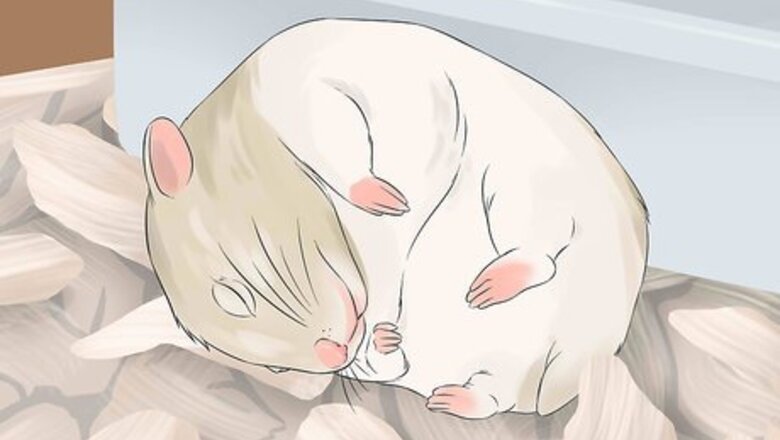
views
- Hand-tame your hamster before you start picking them up or trying to play with them.
- Watching your hamster run and interact with new toys in their environment can be a blast.
- Letting your hamster play and explore outside of their cage is a great way to stimulate them while having fun.
- Make sure that your hamster won’t escape or interact with anything dangerous when you let them out.
Handling Your Hamster Safely
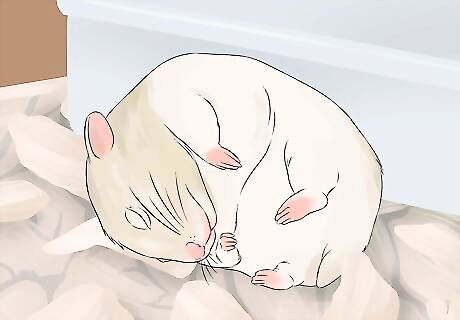
Let sleeping hamsters lie. Hamsters sleep most of the day and are most active in the evening and night. If you wake your hamster, they might be grumpy and resistant to handling. Always let your hamster wake up on their own before playing with him/her.
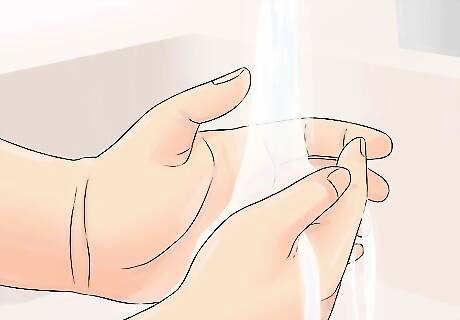
Wash your hands first. Hamsters have a very keen sense of smell. It is important that you wash all food scents off your hands, or your hamster may bite you.
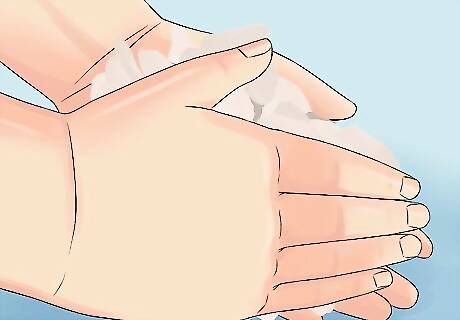
Rub your hands in clean hamster bedding. The smell of bedding will make your hamster feel safer in your hands.
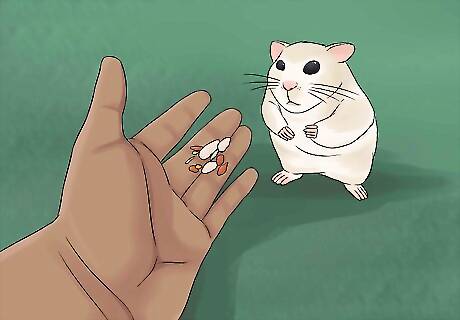
Hand-tame your hamster. Before you can play with your hamster outside their cage, you need to get them used to being handled by you. Start by feeding your hamster treats from your hand. When your hamster approaches you without fear, try letting them play in your hand. When they are comfortable there, pick them up. Gradually increase the amount of time you hold your hamster. Always let your hamster sniff at your closed fist before attempting to pick them up. Do not surprise them. Always handle your hamster over a table or while sitting on the ground. Otherwise, your hamster might suffer a serious injury if they squirm out of your grasp. A fall of only one foot can seriously injure a hamster. If your hamster tries to squirm away or bites you, put it back in its cage. It is tired of being held.
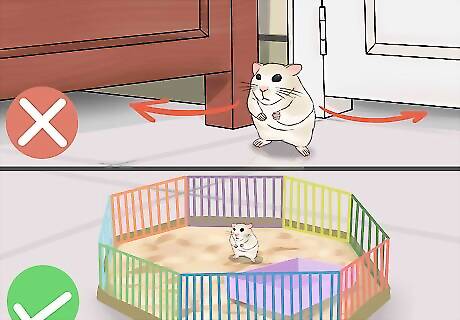
Make sure your hamster cannot escape when playing outside their cage. Play with your hamster in an enclosed area. Be aware that hamsters can escape through very small spaces, such as under doors, so you will need to keep your pet under supervision when playing outside its cage. Don’t play in an area with a small space that your hamster can squeeze into to hide, such as underneath couches or drawers. Bathrooms are convenient enclosed space to play in, but be sure to shut the toilet lid. Consider purchasing a hamster playpen to make sure your pet can’t escape. It should be larger than the hamster’s cage. Also consider covering the pen with a mesh screen so your pet can’t escape. Purchasing a child’s wading pool is an easy way to provide an enclosed, inexpensive play space.
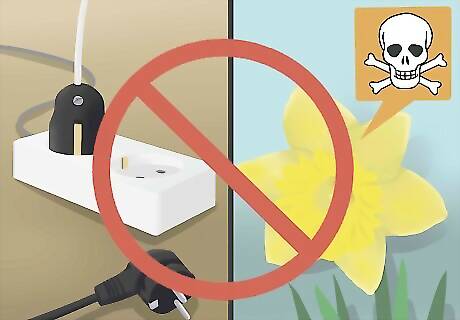
Remove any hazards when playing outside the cage. If it’s there, your hamster will probably chew on it. Be sure to remove all electrical cords from the area where your hamster is playing. Also remove any toxic plants, such as azalea, daffodil, oleander, speedwell, buttercups, bindweed, bluebells, ragwort, elder, hemlock, and privet. For a complete list of toxic plants, see here.

Be careful when playing with your hamster on a table or counter. Hamsters have almost no instinctual fear of falling, and a tumble off a high table or counter can seriously injure your pet. Don’t leave your hamster alone in high places, and always be on hand to keep them from falling.
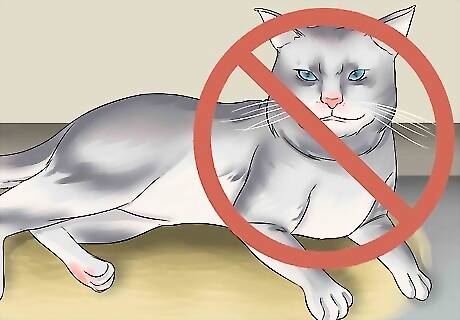
Remove your other pets from the room when playing with your hamster out of the cage. Imagine sharing a room with a giant monster that wants to eat you. Not fun. Even if your hamster is safe, they will find the presence of your dog or cat stressful.

Know how to recapture your hamster if they escape. If your hamster gets loose, all is not lost. Having a plan in advance can ward off panic and make it much more likely you will find your pet. Search near the hamster’s cage first. Look in small places: behind and underneath furniture, in between cushions on sofas and chairs, on bookshelves, in drawers, and inside shoes, tissues boxes, and shoe boxes. If your search fails, leave the cage open and place your hamster’s favorite food near and inside it. Turn out the lights and wait for your hamster to come. If that fails, set out some food before you go to sleep and surround it with flour so that your hamster’s tracks lead you back to its hiding place.
Having Fun with Your Hamster in the Cage

Watch your hamster run. Wild hamsters run miles each day to find food. Your pet doesn’t have to work that hard, but they still have the instinct to run. Put a hamster wheel in your pet’s cage and watch them go. The wheel should be large enough that your hamster’s back does not bend. Solid wheels are preferable, as your hamsters toes or legs may get caught between the bars of a wire wheel. Check the wheel periodically to make sure it is rotating freely. Remove any obstructions as needed and grease with olive oil or vegetable oil.
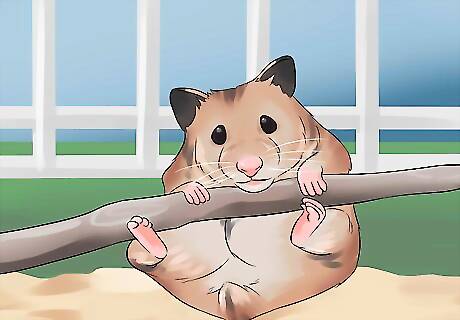
Add some nature. Wooden branches give your hamster something to chew and climb on in their cage, but make sure they are thoroughly cleaned first. Wash each branch with soapy water, let it dry, and then bake it for 45 minutes at 200°F to kill any bugs or eggs. And be sure to use wood that is not toxic to hamsters, such as willow, pear or apple, cottonwood, pecan, or mulberry. For a full list of safe and unsafe woods, see here.
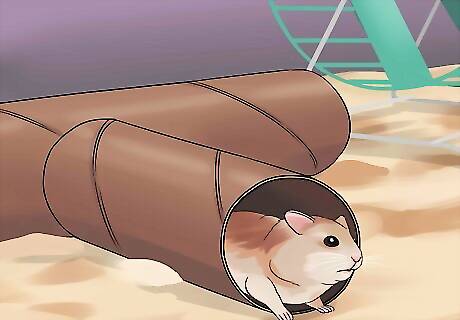
Create a cardboard tube maze. Hamsters love to crawl through leftover toilet paper and paper towel tubes. Try taping several together to make a tunnel maze for your pet.
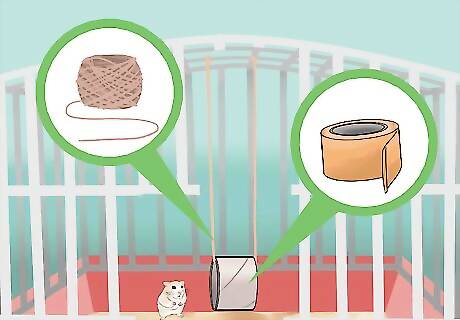
Make a swing with a little string and a used roll of duct tape or packaging tape. Simply run the string through the roll and tie it to the top of your hamster’s habitat so that it hangs just off the floor.
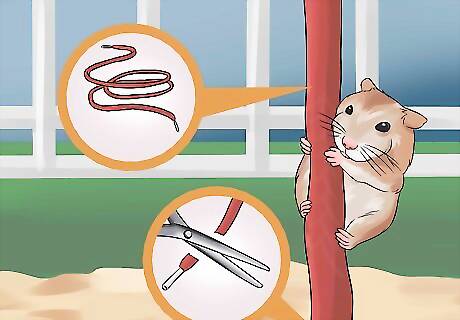
Tie shoelaces to the top of your hamster’s cage. Tie several laces from side to side or leave a few hanging down. Your hamster will love to climb and pull on them. But be sure to remove the plastic tips covering the ends, so that your pet does not eat them and get sick.
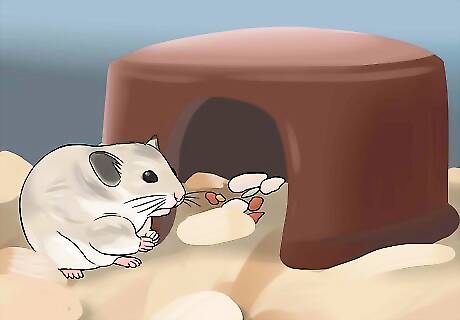
Hide food in your hamster’s cage and watch them find it. Hamster’s love to forage for food. Hide food all around your hamster’s cage – in tubes, on platforms, in corners – and watch them find it.
Playing Outside the Cage
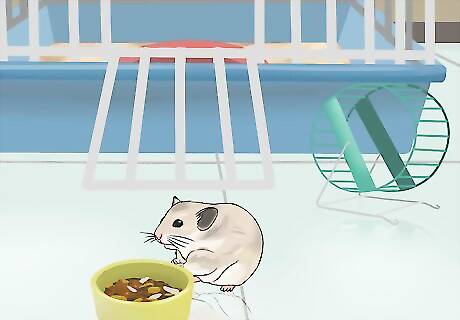
Let your hamster out of their cage to play every day. To maximize your hamster’s health and happiness, you need to give them time outside their cage. And it’s fun! Just be sure your that hamster is hand-tamed and that you play with them in a safe, enclosed area.
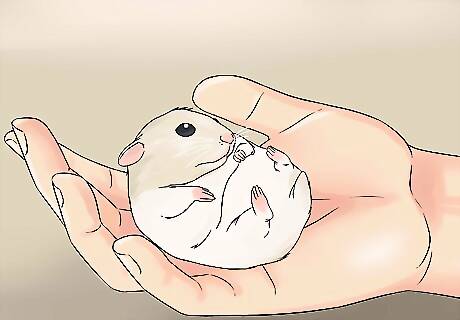
Cuddle your hamster and let them crawl on you. Some hamsters enjoy being cuddled, so long as you don’t squeeze too hard, and they’ll also have fun exploring you. This is a great way to bond with your hamster and teach them to trust you. However, some hamsters don't enjoy human interaction. Be sure you are seated on the ground so that your hamster doesn’t hurt themself if they fall. Make sure you are in an enclosed area so your hamster can’t escape. Limit your time handling your hamster to 10-15 minutes, and for the first few times only 3-4 minutes. If you handle your hamster for too long, they will try to escape or bite you.
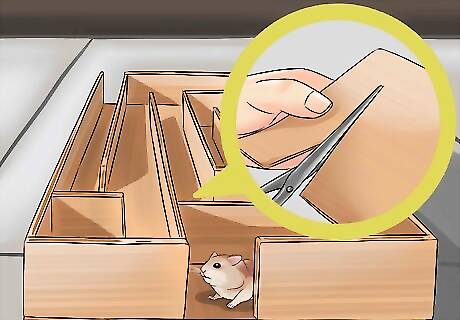
Make a maze. You can make your maze walls out of anything: glued together Popsicle sticks, cardboard, blocks, books, etc. Place some treats in the maze and watch your hamster explore. To make sure your hamster doesn’t escape, consider placing the maze inside a large cardboard box.
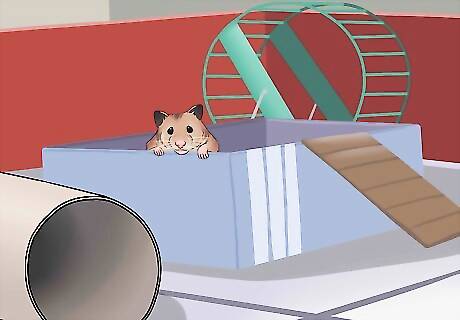
Put your hamster in a playpen with toys. Any secure area with no means of escape can serve as a playpen for your hamster. You can purchase a variety of toys, but your pet will also enjoy exploring household objects such as: Paper towel or toilet paper tubes Tissue or shoe boxes Paper bags Shoes Ramps (a propped up piece of wood or cardboard) Cereal boxes
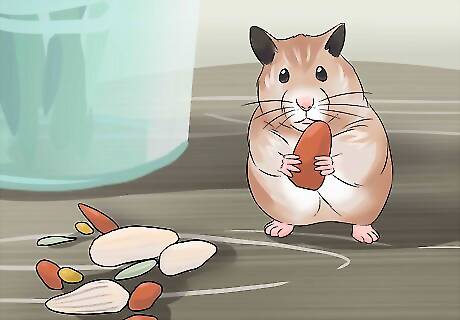
Watch your hamster gather food. A hamster can carry up to half of their body weight in their cheek pouches! Scatter grains or crumbs on the table and watch your hamster collect them. But be careful what you feed your hamster. Foods to avoid include: Junk food: pizza, chocolate, potato chips, pickles, salted peanuts or other high salt foods Citrus fruits, dried fruits, fruit pips, or apple seeds Iceberg lettuce, parsley, or rhubarb Avocado, eggplant, onions, peppers, mushrooms, or garlic Potatoes, kidney beans or red beans Red meat














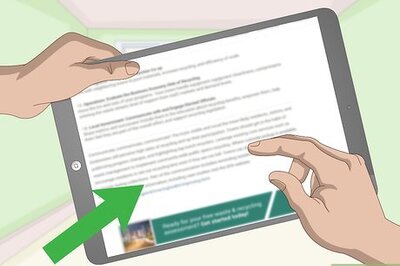


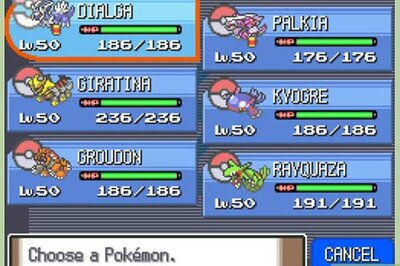
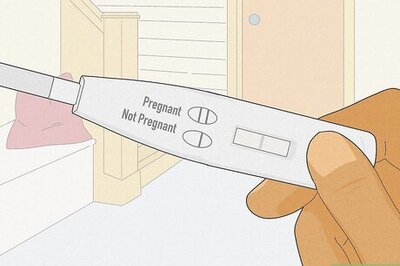
Comments
0 comment